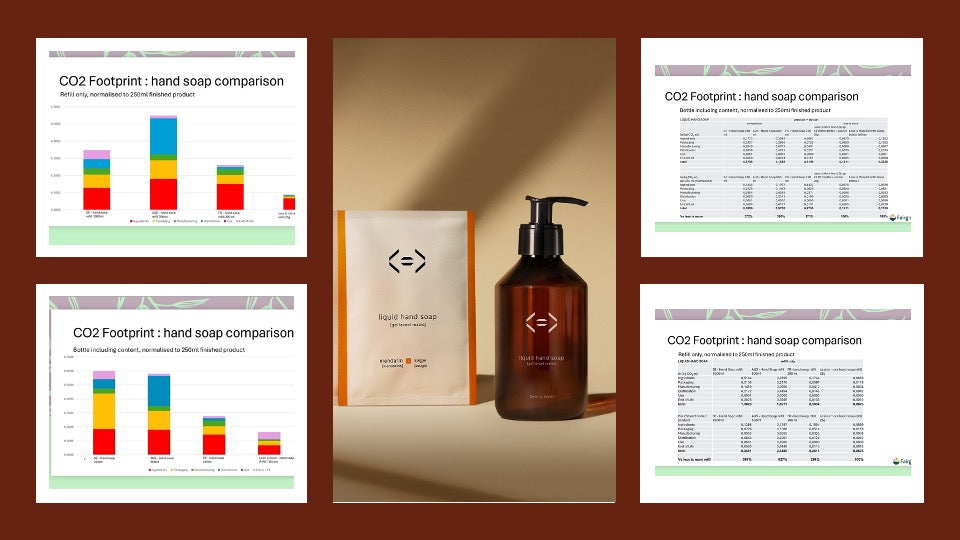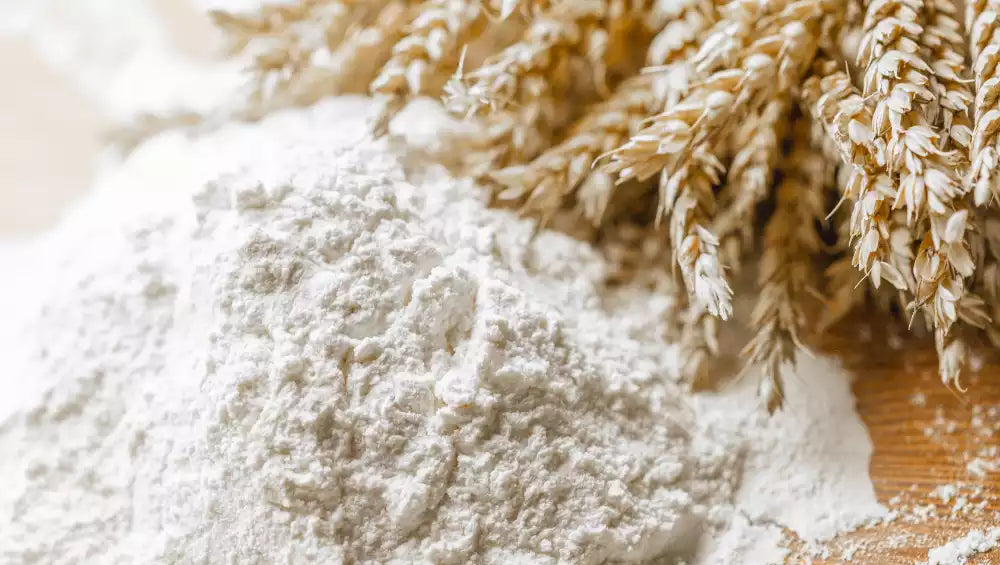So what is really the carbon footprint across the full life cycle of our powder to liquid personal care ?
When we started working on less is more, we intuitively knew that not only we would be able to develop more qualitative products by eliminating the unnecessary and focusing and elevating on what truly matters. But also that our approach would be much more sustainable, with 10 time less volume and weight to ship, and completely eliminating the need for single-use bottles.
Yet we were again and again challenged by retailers, customers and journalists to provide more indisputable facts quantifying the carbon footprint of our approach and benchmarking it to the industry, ideally based on a full lifecycle analysis. Being a small structure we initially struggled to find the right partner for such a complex analysis.
Until we met Fairglow, a Paris-based sustainability company, specializing in Life Cycle Assessments (LCA) at scale for the cosmetic industry. Not only do they provide precise and comprehensive evaluations of every element in the cosmetic value chain from raw material sourcing to end-of-life disposal, their AI driven tool also allows to benchmark very easily one product against a competitor, based on known parameters such as the ingredient list, country of manufacturing and the type of packaging.
We decided to start with only one category, liquid hand soaps, and to compare ourselves to 3 well known competitors: One Australian brand, one Swedish brand, and a French brand.
The results:
For a full bottle with equivalent capacity, less is more generates throughout its life cycle 3.7 times less CO2 than the comparable product from the Swedish brand, 3.6 times less than that from the Australian brand, and 1.7 times less than that of the French brand. This is above all driven by 2 elements: packaging and distribution.
Distribution: thanks to the small size and weight of the less is more refills, the product generates 60 times less emissions than the Australian brand, 20 times less than the Swedish brand and 5 times less than its French competitor.
Packaging: the lightweight and recyclable paper bags generate 8.2 times less CO2 than the bottle of the Swedish brand, 4.3 times less than the Australian brand and 2 times less than the French competitor.

Focus on refills: looking only at the refill solutions of the 4 competing brands, which in themselves are already a step towards more sustainable packaging solutions, the carbon footprint of less is more is 4 times lower than the refill of the Swedish brand, 6 times lower than the Australian brand, and 3 times less than the French competitor, as no water is being shipped.
In conclusion, less is more stands out as the most respectful solution for the environment in terms of carbon footprint, whether we compare the refillable full bottles, or only refills. Available on www.lessismore.co
Methodology: Together with Fairglow, we have focused our analysis on a single product, liquid hand soap, to precisely measure its carbon footprint. For this comparative study, we selected three renowned brands, of Australian, Swedish and French origin, by analyzing both the finished products (full bottles) and their refills. Fairglow takes into account greenhouse gas (GHG) emissions and ensures compliance with environmental regulations such as the GHG Protocol and CSRD.



Leave a comment
This site is protected by hCaptcha and the hCaptcha Privacy Policy and Terms of Service apply.